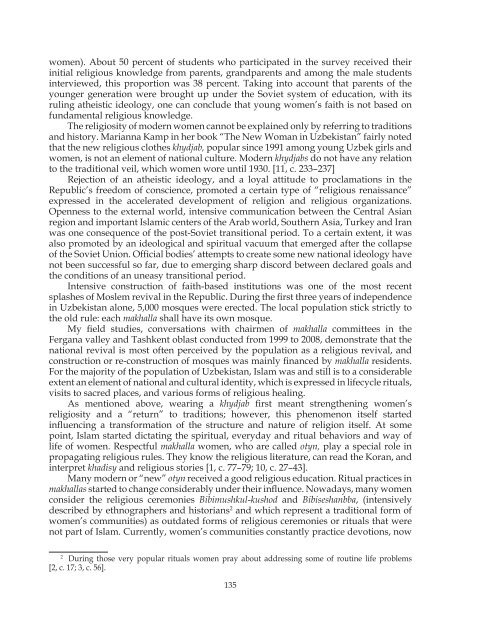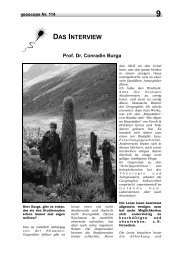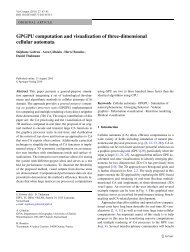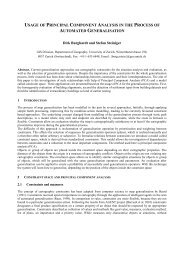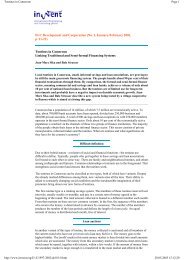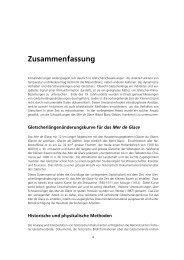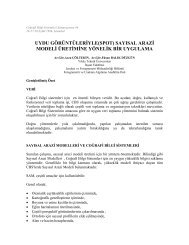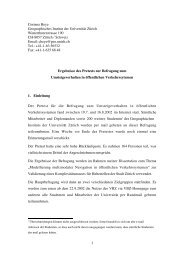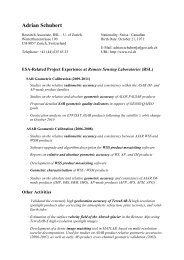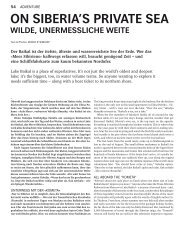KYRGYZSTAN TODAY Policy briefs on - Department of Geography
KYRGYZSTAN TODAY Policy briefs on - Department of Geography
KYRGYZSTAN TODAY Policy briefs on - Department of Geography
Create successful ePaper yourself
Turn your PDF publications into a flip-book with our unique Google optimized e-Paper software.
women). About 50 percent <strong>of</strong> students who participated in the survey received their<br />
initial religious knowledge from parents, grandparents and am<strong>on</strong>g the male students<br />
interviewed, this proporti<strong>on</strong> was 38 percent. Taking into account that parents <strong>of</strong> the<br />
younger generati<strong>on</strong> were brought up under the Soviet system <strong>of</strong> educati<strong>on</strong>, with its<br />
ruling atheistic ideology, <strong>on</strong>e can c<strong>on</strong>clude that young women’s faith is not based <strong>on</strong><br />
fundamental religious knowledge.<br />
The religiosity <strong>of</strong> modern women cannot be explained <strong>on</strong>ly by referring to traditi<strong>on</strong>s<br />
and history. Marianna Kamp in her book “The New Woman in Uzbekistan” fairly noted<br />
that the new religious clothes khydjab, popular since 1991 am<strong>on</strong>g young Uzbek girls and<br />
women, is not an element <strong>of</strong> nati<strong>on</strong>al culture. Modern khydjabs do not have any relati<strong>on</strong><br />
to the traditi<strong>on</strong>al veil, which women wore until 1930. [11, с. 233–237]<br />
Rejecti<strong>on</strong> <strong>of</strong> an atheistic ideology, and a loyal attitude to proclamati<strong>on</strong>s in the<br />
Republic’s freedom <strong>of</strong> c<strong>on</strong>science, promoted a certain type <strong>of</strong> “religious renaissance”<br />
expressed in the accelerated development <strong>of</strong> religi<strong>on</strong> and religious organizati<strong>on</strong>s.<br />
Openness to the external world, intensive communicati<strong>on</strong> between the Central Asian<br />
regi<strong>on</strong> and important Islamic centers <strong>of</strong> the Arab world, Southern Asia, Turkey and Iran<br />
was <strong>on</strong>e c<strong>on</strong>sequence <strong>of</strong> the post-Soviet transiti<strong>on</strong>al period. To a certain extent, it was<br />
also promoted by an ideological and spiritual vacuum that emerged after the collapse<br />
<strong>of</strong> the Soviet Uni<strong>on</strong>. Official bodies’ attempts to create some new nati<strong>on</strong>al ideology have<br />
not been successful so far, due to emerging sharp discord between declared goals and<br />
the c<strong>on</strong>diti<strong>on</strong>s <strong>of</strong> an uneasy transiti<strong>on</strong>al period.<br />
Intensive c<strong>on</strong>structi<strong>on</strong> <strong>of</strong> faith-based instituti<strong>on</strong>s was <strong>on</strong>e <strong>of</strong> the most recent<br />
splashes <strong>of</strong> Moslem revival in the Republic. During the first three years <strong>of</strong> independence<br />
in Uzbekistan al<strong>on</strong>e, 5,000 mosques were erected. The local populati<strong>on</strong> stick strictly to<br />
the old rule: each makhalla shall have its own mosque.<br />
My field studies, c<strong>on</strong>versati<strong>on</strong>s with chairmen <strong>of</strong> makhalla committees in the<br />
Fergana valley and Tashkent oblast c<strong>on</strong>ducted from 1999 to 2008, dem<strong>on</strong>strate that the<br />
nati<strong>on</strong>al revival is most <strong>of</strong>ten perceived by the populati<strong>on</strong> as a religious revival, and<br />
c<strong>on</strong>structi<strong>on</strong> or re-c<strong>on</strong>structi<strong>on</strong> <strong>of</strong> mosques was mainly financed by makhalla residents.<br />
For the majority <strong>of</strong> the populati<strong>on</strong> <strong>of</strong> Uzbekistan, Islam was and still is to a c<strong>on</strong>siderable<br />
extent an element <strong>of</strong> nati<strong>on</strong>al and cultural identity, which is expressed in lifecycle rituals,<br />
visits to sacred places, and various forms <strong>of</strong> religious healing.<br />
As menti<strong>on</strong>ed above, wearing a khydjab first meant strengthening women’s<br />
religiosity and a “return” to traditi<strong>on</strong>s; however, this phenomen<strong>on</strong> itself started<br />
influencing a transformati<strong>on</strong> <strong>of</strong> the structure and nature <strong>of</strong> religi<strong>on</strong> itself. At some<br />
point, Islam started dictating the spiritual, everyday and ritual behaviors and way <strong>of</strong><br />
life <strong>of</strong> women. Respectful makhalla women, who are called otyn, play a special role in<br />
propagating religious rules. They know the religious literature, can read the Koran, and<br />
interpret khadisy and religious stories [1, с. 77–79; 10, с. 27–43].<br />
Many modern or “new” otyn received a good religious educati<strong>on</strong>. Ritual practices in<br />
makhallas started to change c<strong>on</strong>siderably under their influence. Nowadays, many women<br />
c<strong>on</strong>sider the religious cerem<strong>on</strong>ies Bibimushkul-kushod and Bibiseshanbba, (intensively<br />
described by ethnographers and historians 2 and which represent a traditi<strong>on</strong>al form <strong>of</strong><br />
women’s communities) as outdated forms <strong>of</strong> religious cerem<strong>on</strong>ies or rituals that were<br />
not part <strong>of</strong> Islam. Currently, women’s communities c<strong>on</strong>stantly practice devoti<strong>on</strong>s, now<br />
2<br />
During those very popular rituals women pray about addressing some <strong>of</strong> routine life problems<br />
[2, с. 17; 3, с. 56].<br />
135


